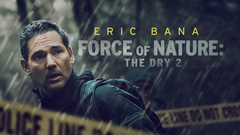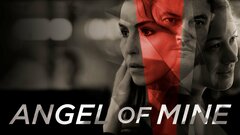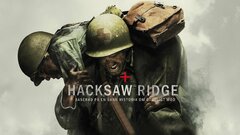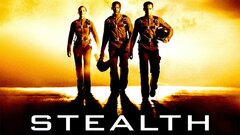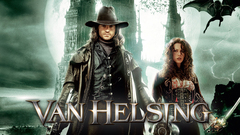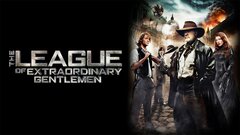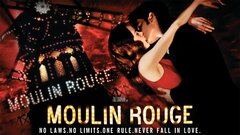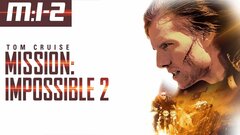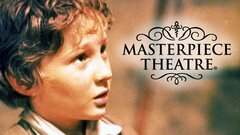Known primarily in his native Australia for playing the leading man, actor Richard Roxburgh gained recognition with U.S. audiences for his scenery-chewing performances in several delightfully villainous roles. Roxburgh won critical acclaim for his based-on-fact portrayal of a corrupt cop in the miniseries "Blue Murder" (Australian Broadcasting Association - ABC, 1995), as well as his feature film performance in "Doing Time with Patsy Cline" (1997). Despite his homegrown success, it would be a supporting role as a sadistic henchman in the Tom Cruise action sequel "Mission: Impossible 2" (2000), followed by his sniveling, dastardly turn as the rodent-like Duke in Luhrmann's "Moulin Rouge" (2001) that brought Roxburgh international attention.
Temporarily finding his forte in Victorian-era genre fare, he took on a string of iconic characters in the films "The Hound of the Baskervilles" (PBS, 2002), "The League of Extraordinary Gentlemen" (2003), and "Van Helsing" (2004). Roxburgh also established himself as a talented director on the award-winning biographical drama "Romulus, My Father" (2008). As he moved freely from Australian-produced film and TV projects to major Hollywood studio feature films, Roxburgh proved himself an exceptionally dexterous performer, able to deliver equally impressive performances in the role of leading man or supporting character.
Richard Roxburgh was born on Jan. 1, 1962 in Albury, New South Wales, Australia, to parents Mary, a homemaker, and John, an accountant. As the youngest of six children, Richard, a modest student, took an early interest in acting and theater after seeing the occasional stage production with his family and reading "Death of a Salesman" one summer. The initial plan was for him to follow in his father's footsteps, and he dutifully attended Australian National University, where he studied economics for a time.
Roxburgh eventually became disenchanted with his intended career path, however, and before long found himself increasingly drawn to the theater. Dropping out of university, he was accepted - after two auditions - to Australia's prestigious National Institute of Dramatic Arts (NIDA), from which he graduated in 1986. From there, Roxburgh divided his efforts between the stage and minor roles on Australian television productions such as "The Riddle of the Stinson" (syndicated, 1987) and "The Saint: Fear in the Fun Park" (syndicated, 1989), prior to making his feature film debut in the action-drama "Dead to the World" (1991). Other early work included a stint with the Belvoir St Theater - whose alumni included the likes of Cate Blanchett and Geoffrey Rush - where he earned accolades for his memorable turn as Hamlet in 1994, among other roles.
Roxburgh's career was jump-started with his galvanizing portrayal of real-life police detective Roger Rogerson, whose involvement in a 1980s police corruption scandal formed the basis of the controversial TV miniseries "Blue Murder" (Australian Broadcasting Association - ABC, 1995). Roxburgh earned critical acclaim for his work, although, ironically, the show was not aired in his home province of New South Wales for nearly six years due to pending court cases involving actual persons depicted in the gritty crime drama.
Fresh off that triumph, Roxburgh could be seen as political insurgent Joe Welsh, the reputed illegitimate son of Joseph Stalin, in the black comedy "Children of the Revolution" (1996). The following year, the actor garnered the Australian Film Institute Award for Best Actor in a Leading Role for his work in the country-and-Western-themed "Doing Time with Patsy Cline" (1997), in addition to headlining the rueful romantic comedy "Thank God He Met Lizzie" (1997). Apparently working non-stop at this point, the in-demand actor next essayed a pair of real-life characters - Australian government official William Hobbs in the miniseries "Frontier" (ABC, 1997), and Ronald Ryan, the last man to be hanged in the country, in the TV-movie "The Last of the Ryans" (syndicated, 1997).
Beginning to gain recognition north of the equator, Roxburgh also landed a supporting role in an Australian-produced film that enjoyed a broad international release - "Oscar and Lucinda" (1997), a period romance starring Cate Blanchett and Ralph Fiennes. He continued to earn acclaim portraying historical characters, including his performance as turn-of-the-century concert pianist Percy Grainger in the biopic "Passion" (1999). Roxburgh's exposure continued to spread beyond his native land with his portrayal of a British officer in the elegiac "The Last September" (2000), Deborah Warner's feature directorial debut about the waning influence of the Anglo-Irish classes. The actor landed his first major Hollywood project playing the No. 2 bad guy out to get Tom Cruise in the hit sequel "Mission: Impossible 2" (2000), directed by Hong Kong action auteur, John Woo.
He followed with another - far more critically acclaimed - big budget movie, as yet another villain - the insanely jealous Duke - in director Baz Luhrmann's hyperkinetic musical extravaganza "Moulin Rouge" (2001), opposite Nicole Kidman and Ewan McGregor.
Roxburgh returned home to co-star in the romantic comedy "The One and Only" (2002) before appearing opposite Michelle Yeoh and Ben Chaplin in the martial arts action-adventure "The Touch" (2002). He followed in the professional footsteps of some of cinema's greatest actors when he was given the chance to portray the great detective Sherlock Holmes in a TV adaptation of "The Hound of the Baskervilles" (PBS, 2002).
A year later, Roxburgh took on a speculative variation of another classic Arthur Conan Doyle character as "M" - aka Professor Moriarty - in the period action-adventure "The League of Extraordinary Gentlemen" (2003). An unsatisfying adaptation of the revered graphic novel by Alan Moore, it also had the distinction of being film icon Sean Connery's final role before his official retirement. Remaining in Victorian-era classic literature mode, he took on the supremely villainous role of Count Dracula in director Stephen Sommers' horror-adventure "Van Helsing" (2004), featuring fellow Aussie Hugh Jackman as the titular vampire killer. Now working steadily in Hollywood, Roxburgh followed with a supporting role in the fighter pilot action-thriller "Stealth" (2005), which starred Jamie Foxx and Jessica Biel.
Roxburgh was then off to Spain to film the gothic haunted house tale "Fragile" (2005), starring Calista Flockhart as a nurse at a decrepit children's hospital where the young patients are being attacked by an unseen, malicious entity. He played a detective investigating a student's death opposite Toni Colette in the thriller "Murderous Intent" (2006), then moved behind the camera to produce and direct the biographical drama "Romulus, My Father" (2008), starring fellow countryman Eric Bana as a deeply moralistic man trying raise his son (Kodi Smit-McPhee) amidst mounting hardship in rural Australia. Based on the memoir of the same name by Raimond Gaita, this labor of love for Roxburgh earned the first-time director an Australian Film Institute Award for Best Film.
He returned to performing with a regular leading role on the Australian drama series "East of Everything" (ABC, 2008-09) and as the former Australian Prime Minister in the biopic "Hawke" (Network 10, 2010), the latter role winning Roxburgh his second Australian Film Institute Award for Best Actor. Once again working steadily on Australian TV, he took on another lead on the legal drama series "Rake" (ABC1, 2010-12), in which Roxburgh played brilliant but self-destructive barrister Cleaver Greene, a character reminiscent of actor Hugh Laurie's Dr. Gregory House.
Roxburgh ventured into the realm of computer-generated animation for the first time when he voiced the character of Boron, leader of the Guardians, in director Zach Snyder's fantasy-adventure "Legend of the Guardians: The Owls of Ga'Hoole" (2010). Back on the big screen and in the flesh, he next appeared in producer James Cameron's 3-D underwater action-adventure "Sanctum" (2011), as the leader of a dive team trapped within an uncharted, massive sub-surface cavern.
By Bryce Coleman


